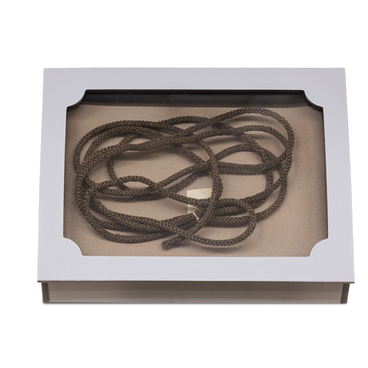Epigraphic monuments made in Arabic scripts appeared in the Middle Volga region in the second half of the 13th century. The majority of the known 400 Bulgarian epitaphs were made in the first half of the 14th century.
The Ulyanovsk Regional Museum of Local Lore named after Ivan Goncharov houses a Bulgarian gravestone made of gray limestone. The rectangular upper part has a hollowed-out pointed arch with haunches, but the lower part is missing. The inside of the upper part is decorated with a six-petal rosette pattern. Bulgarian epitaphs usually depict six-, seven-, and eight-petal rosettes. The inscription is carved in the Kufic script.
Kufic is an early script, preferred for Quran transcription and the titles of its Surahs. This script gravitated towards strict geometrical forms like straight lines. Kufic was a dominant Arabic calligraphic style until the 12th century. The epitaph is written in Arabic and Bulgarian. The reverse side of the epitaph features a circular pattern, below which there once was an inscription (the first line has been partly preserved). There are different variants as to how to read and translate the inscription on the front side of the gravestone:


